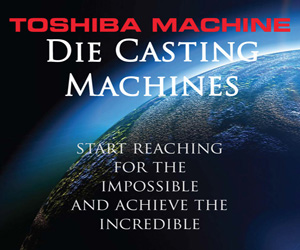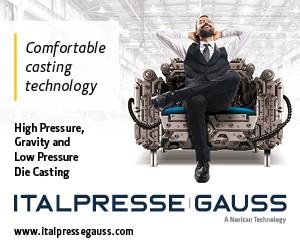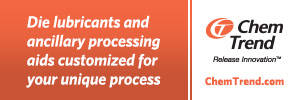The powder metallurgy process is a simple but multi-step manufacturing process.
First, premixed metal powder is compressed in a mold by a high powered press, giving it its shape and increased density. This is the “green state” — the parts, called compacts at this stage, are shaped but not technically solid. Next, compacts are fed through a sintering oven, which heats them to a temperature just below the melting point of the metal. This allows the metal particles to fuse together without melting and thereby keep their shape.
Die Casting vs Powder Metallurgy
In die casting, superheated molten metal is forcefully injected into a die using either hydraulic or pneumatic pressure. The cast is cooled, ejected, and a near-net shape part is the result.
Despite the radical differences in process, die casting and metallurgy share many similarities:
- Both accommodate blending of material — it is a simple process when metal is molten or powdered.
- Both are well suited to high volume product runs and the production of either simple or very complex parts.
- Both produce net shape or near-net shape parts with a high degree of precision and repeatability.
That said, they each also have individual strengths and weaknesses. Powder metallurgy can use ferrous metals and create parts with high operating temperatures, though they also tend to be disproportionately heavy and have thicker walls than parts produced by die casting.
Parts made from powder metallurgy can be very dense, which can be good or bad depending on applications, but controlled porosity can also be achieved. Mold creation for powder metallurgy is expensive and, though complex parts can be manufactured, there are limits to geometry that die casting does not encounter.
Learn More
To ensure that your parts function exactly as they are designed to, it is important to understand the differences between the manufacturing processes that are available to you. Die casting and powder metallurgy share similarities, but they have many differences, both in terms of production process and benefits.
Contact NADCA today to learn more about die casting and for help determining if it’s the best production process for your part.








